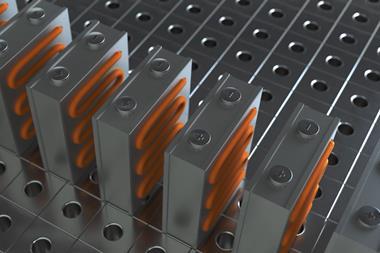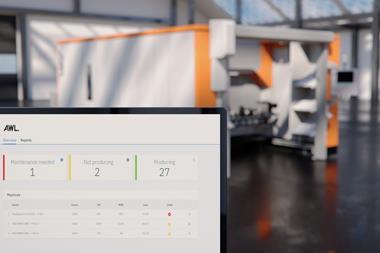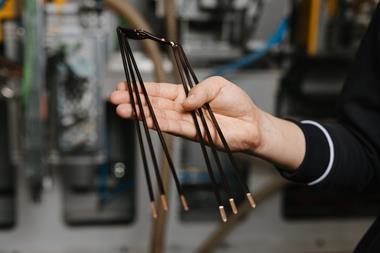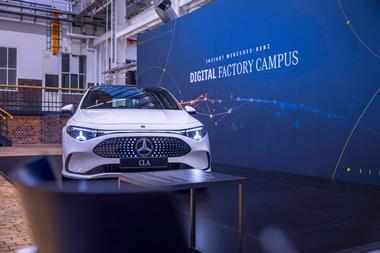
Daniël Bottema, research and development manager at AWL-Techniek BV, talked to Dermot Healy about the role AWL hope to play developing the fully automated factory of the future
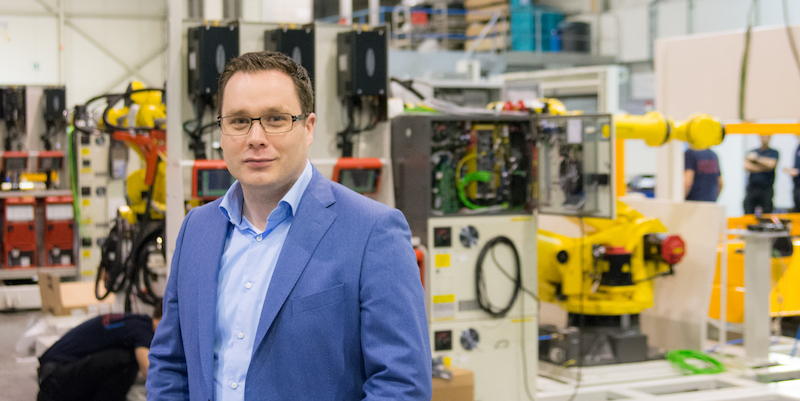 You have been speaking recently about the fully automated factory in presentations to customers. How far along the automation road are you at AWL, and what has been the response from your customers?
You have been speaking recently about the fully automated factory in presentations to customers. How far along the automation road are you at AWL, and what has been the response from your customers?
Daniël Bottema: The fully automated factory has certainly become a big issue for us recently at AWL. We are system integrators and have had, as you know, for many years a major role in supplying a range of technologies to the automotive sector. We find the pressure is now coming from our customers who require even greater levels of automation and look to us to provide solutions. We traditionally have mainly produced standalone machines, predominantly in the joining and laser welding areas but across other technologies also, but there is no doubt now that a much more integrated approach is called for, and this has implications for how our company will change and develop in the future.
Are you saying that you face real challenges in these developments?
Yes – of course. We have always had the challenge of adapting our products to the needs and preferences of different markets. We cannot just sell the same machines across the different national markets. Each has its own requirements, and our challenges to date have been about adapting our machines to these preferences. For example - the US, China and Europe will have different supplier preferences for the robots they wish to use and this will have consequences for operating and control systems that we supply. But we are used to dealing with these challenges as we have been supplying globally for many years. But now we get a sense that various factors are coming together to bring about a step change in automation and we need to respond to this. We are getting very clear messages from our customers that high levels of automation are seen as essential to maintain competitiveness and they are very sensitive to the potential of the fully automated factory and keen to partner with us in these developments. It is no longer the case so much that a detailed business case on cost savings has to be argued for each automation initiative. It is simply a necessity to survive. The argument for high levels of automation has already been won.
How has this come about? Why are your customers seeing their future in this way?
At the most basic level they simply can’t get the people they want. All the time we hear customers talking to us about a shortage of operators that they struggle to recruit the stable, capable workforce they need to operate in the traditional way. And, of course, if you look at most of the countries where automotive production is now centred you’ll see all the population projections showing a decline in population. This will have a growing impact. At the same time the cost of developing automated facilities has been falling as the technologies have developed and evolved. These two influences have moved the discussion away from seeinghigh levels of automation as an option, towards seeing itas a necessity.How is AWL responding to this?
We have approached it in stages, taking various elements of the automation process and developing systems and technologies which we can show to our customers in our Experience Center. That way we can prove to customers the viability of the systems we are proposing and adapt them to their requirements. For example, we’ve devoted a lot of time to developing sophisticated bin picking equipment as this is an essential component of automated production. Bin picking allows the robot to pick randomly-placed parts from a box and we apply this application to automatically load our machines. It runs at high speed and with high precision by using advanced algorithms. For bin picking it’s important to select the right scanner for the localisation of parts, designing a good multiple point gripper to realise optimal picking while robot simulation of the path is needed to prevent collision and improve the success rates. AWL has built up a strong experience in vision applications which allows easy adaption to each highly automated production environment. And, of course, we have been exploring the potential of 3D printing to produce complex gripper components to enhance flexibility and minimise lead times. These developments have given rise to pilot projects in collaboration with our customers.
Pilot projects are underway?
Yes. We have had an excellent response from our customers. It surprised us. They have been keen to join the pilot projects and our Experience Center makes it possible to involve them in development which is, of course, what we want. We are also – for another example - doing a lot of work on Self-Driving Vehicles (SDVs) which are another important element in the make up of the fully automated factory. They pose interesting technical challenges as unlike the existing Automated Guided Vehicles (AGVs), which traverse a predetermined path SDVs have to react and respond, continually learning their environment, and responding to changes. We are very actively investigating SDV applications in the production processes of our customers. This involves integrating this equipment with the total control systems of the factories, their management and control systems, so it is a complex task.
Surely your customers will want to implement automation in existing facilities as well as new plants? How possible is it to derive the benefits of these automation technologies in existing facilities? The automotive sector is always changing and modifying so we always hear that customers demand flexibility. How can you deal with these issues?
It is these issues that have encouraged us in the development of modularisation. Using modular concepts allows for systems to be adapted to different environments much more easily, and it helps us reduce lead times which is always something customers are concerned about. The modular solutions for machines and software translate the customers’ requirements into a flexible and customer-specific production concept. Obviously, the automation initiatives work best in new, purpose-built environments where the full benefit of SDVs and so on can be manifested with savings of space and equipment positioning optimised from the outset. However, we have worked with customers using existing facilities and there are benefits to be gained in both situations. Also, as you say, our task is to facilitate the flexibility that customers always require and adapt the technologies to their needs. The modular concept helps also with that objective. Also, with our robotic machines we have developed specific software that greatly reduces the time and complexity of making program changes.
You mentioned that the new developments in automation were having an effect on the way your company developed and evolved. How so?
It is almost as if we are moving from being a conventional engineering company to a software company. The new developments require new skills with ever increasing software development required to integrate the new automation technologies into the control systems of the factories becoming a major part of the work. We need all the time to recruit new people with new skills. They bring with them new expectations – not just about salary conditions – but also about ways of working and work cultures. All this makes it quite an exciting and challenging time for the company - developing new products, new systems and new ways of working.





























